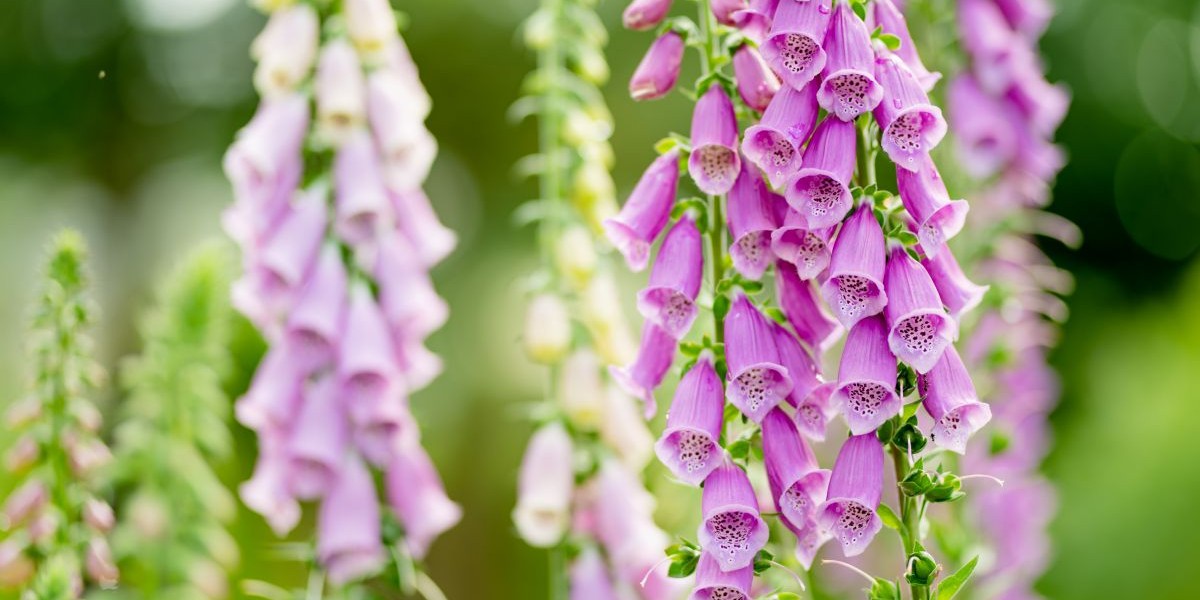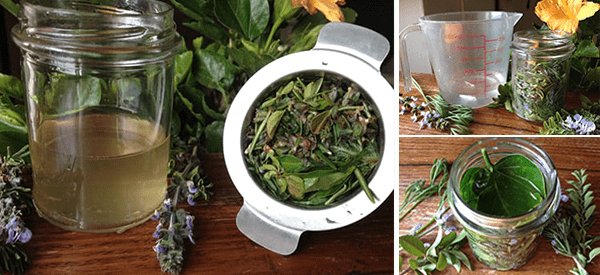
Foxglove: The Silk Serpent of the Garden
There are plants that invite your admiration — and then there are those that demand your respect. Foxglove belongs firmly to the latter. Rising in tall spires of pink, white, and purple, its blossoms nod gently in the wind like tiny church bells. Yet, behind this quiet elegance lies a fierce spirit — a reminder that nature’s most exquisite gifts are often her most guarded.
Known scientifically as Digitalis purpurea, Foxglove is the Silk Serpent of the herbal world: mesmerizing, potent, and never to be underestimated. It embodies both beauty and danger, its healing potential entwined with a cautionary tale.
To walk past a blooming patch of Foxglove is to sense something ancient. Its presence humbles the onlooker — teaching that all healing carries risk, and that reverence is the first step toward wisdom.
🌿 Plant Profile
- Scientific Name: Digitalis purpurea
- Family: Plantaginaceae
- Common Names: Foxglove, Fairy Thimbles, Dead Man’s Bells, Witch’s Gloves
- Habitat: Woodland clearings, shaded gardens, and moist hillsides across Europe and North America
- Parts Used: Leaves (extremely toxic; medicinal use only under professional care)
Foxglove’s beauty is deceptive in its simplicity. The plant begins modestly — a rosette of soft green leaves its first year — before unfurling into towering flower spikes in its second. Each tubular bloom seems to glow from within, attracting bees that instinctively know where to find its nectar without ever tasting its poison.
It favors dappled shade and moist soil, often appearing in places once disturbed by human hands: old logging paths, abandoned homesteads, forgotten gardens. It seems drawn to the spaces between civilization and wilderness — thriving where balance teeters.
Folklore whispers that foxes once wore the flowers on their paws to silence their steps, a gift from the fairies who favored the plant. Others said that each bell rang softly when unseen spirits passed. These tales may sound fanciful, but they reveal an old truth: Foxglove has always belonged to the borderlands — between light and shadow, medicine and danger.
💊 The Healing Power Hidden in the Poison
The story of Foxglove’s medicine is as delicate as its petals. In the late 1700s, English physician William Withering learned of a local healer using a mysterious brew to treat “dropsy,” the fluid retention caused by heart failure. Her remedy worked when others failed. Its secret ingredient — Foxglove — would change medicine forever.
Within its leaves lie powerful compounds known as cardiac glycosides — digitoxin and digoxin. In controlled doses, they strengthen and regulate the heartbeat. They became the foundation of modern cardiology, and to this day, synthetic digoxin derived from Foxglove saves lives worldwide.
But nature gives no power without price. The line between dose and poison is razor-thin. A fraction too much can slow the heart until it stops. Even touching the leaves with bare hands can cause skin irritation in some people.
Foxglove’s medicine is not meant for the casual healer. Its gift is meant to be understood, not harvested. It reminds us that herbalism is not merely about using plants — it is about learning from them. Foxglove teaches restraint, humility, and the courage to say no when curiosity tempts the unready.
It is a teacher of boundaries — a lesson modern medicine often forgets.
⚖️ A Delicate Balance Between Life and Death
Every part of Foxglove is toxic. Its leaves, stems, and flowers all contain potent compounds that can bring the strongest body to stillness. For centuries, healers feared even handling it. Yet those same compounds, when measured by trained hands, became some of the most effective heart medicines in human history.
This paradox is the essence of the Silk Serpent: beautiful and lethal, compassionate and cruel. It doesn’t hide its danger — it displays it proudly. Its warning colors and bell-like flowers are both invitation and defense.
In nature, such duality is not contradiction but harmony. Foxglove is balance personified — the dark mirrored perfectly by the light. It does not apologize for its power, nor should it. It stands as a guardian of wisdom, reminding healers that the deeper they delve into nature’s medicine, the more reverence they must carry.
Many herbalists keep a single Foxglove in their gardens as a reminder that all medicine is sacred, and that not every cure is meant to be touched.
🌸 Growing Foxglove in the Garden
Despite its toxicity, Foxglove is one of the most beloved ornamental flowers in traditional cottage gardens. It grows easily from seed, thriving in well-drained soil and partial shade. Once established, it self-seeds generously — a quiet testament to endurance and renewal.
To grow Foxglove safely:
- Choose a shaded or semi-shaded spot with moist, rich soil.
- Sow seeds in late summer or early fall; do not cover them — they need light to germinate.
- Thin seedlings to about a foot apart once they sprout.
- Always wear gloves when handling the plant or collecting seeds.
Foxglove pairs beautifully with ferns, hostas, and other shade-loving plants. It attracts bees, butterflies, and hummingbirds, bringing life to quiet corners of the garden.
Still, it should be planted thoughtfully — away from vegetable beds, water sources, and children’s play areas. Let it stand at the garden’s edge, where its beauty can be admired without risk. Foxglove is best viewed as a living boundary — a symbol of nature’s power deserving quiet respect.
To grow Foxglove is to practice patience. It takes two years to bloom, yet its presence lingers far beyond that brief display. Like wisdom itself, it arrives slowly — and once earned, it remains.
🌾 Historical and Folkloric Uses
Foxglove’s role in folklore reflects humanity’s fascination with what lies beyond control. In Celtic tradition, the plant was said to belong to the fae, who punished those who picked it carelessly. In other tales, planting Foxglove near a home kept evil spirits at bay — though some whispered it invited them instead.
Its common names — “Dead Man’s Bells” and “Witch’s Gloves” — hint at its reputation. It was both protector and poison, charm and curse. In medieval herbals, Foxglove was associated with transformation — not physical but spiritual. It represented the courage to face danger and the wisdom to turn away before it consumed you.
Victorian gardeners adored its towering beauty, yet even they used it symbolically: to gift Foxglove meant “beware.” Every era found in this plant a reflection of itself — admiration tinged with fear.
To this day, Foxglove remains the emblem of the healer’s path — where compassion must walk hand-in-hand with restraint.
⚠️ Precautions and Warnings
Foxglove should never be used internally or in homemade medicine. Even experienced herbalists rely on professionally extracted, standardized forms of its compounds when prescribed under medical supervision.
If you choose to grow Foxglove, treat it as you would fire — a beautiful servant, but a terrible master.
- Always wear gloves when pruning or transplanting.
- Wash your hands and tools afterward.
- Keep pets and children away.
- Never compost its leaves or flowers near edible crops.
Foxglove is not an herb of daily use — it is a teacher of caution. It reminds us that not all gifts of the earth are meant for direct healing; some are meant to preserve our respect for the mystery of life.
To work with plants safely is to know which to use and which to revere from a distance.
🌿 Foxglove vs. Gentle Heart Herbs
| Herb | Main Action | Safety | Traditional Uses | Notes |
| Foxglove (Digitalis purpurea) | Strengthens heart contractions, regulates rhythm | Extremely toxic | Historical cardiac remedy | Potent, dangerous, for professional use only |
| Hawthorn (Crataegus monogyna) | Improves circulation, strengthens vessels | Very safe | Heart tonic, blood pressure support | Gentle, long-term heart health ally |
| Motherwort (Leonurus cardiaca) | Calms palpitations, reduces anxiety | Safe in moderation | Nervous heart, stress relief | Soothes emotional tension affecting the heart |
| Linden (Tilia cordata) | Mild relaxant, supports cardiovascular function | Very safe | Used for tension, blood pressure | Ideal for heart and mind balance |
| Yarrow (Achillea millefolium) | Regulates circulation, supports healing | Safe | Blood and circulation support | Gentle tonic for the entire system |
🌿 Final Thoughts: The Lesson of the Silk Serpent
The Silk Serpent stands in the garden as a symbol of balance — proof that the same earth that heals can also harm. Foxglove’s message is not fear but awareness. It reminds us that the heart, both literal and spiritual, must be tended with care and humility.
To understand Foxglove is to understand nature’s truth: that healing is not born of control but of relationship. When we approach her with reverence, nature offers her gifts freely. When we demand without respect, she withholds — or worse, she teaches.
Foxglove is one of those teachers. It does not invite touch; it invites thought. Its beauty conceals its power, and its power reveals our limits. That, perhaps, is the purest form of wisdom nature gives.
📖 Discover More in The Forgotten Home Apothecary
If Foxglove teaches respect for nature’s boundaries, The Forgotten Home Apothecary teaches how to work safely within them.
Inside, you’ll find:
- Remedies for heart, nerves, and immunity drawn from gentle, time-tested herbs
- Step-by-step recipes for tinctures, teas, and salves
- Plant profiles with identification and foraging guidance
- The old herbal knowledge your grandparents lived by
Every page bridges ancient tradition with modern understanding — helping you reconnect with plants that heal gently, without risk.
👉 Explore The Forgotten Home Apothecary here and rediscover the heart of true herbal wisdom — one that honors both the light and the shadow of nature’s design.
You may also like:
 Hawthorn Berry Tea: A Heart-Healthy Herbal Brew
Hawthorn Berry Tea: A Heart-Healthy Herbal Brew
How To Make The Strongest Natural Antibiotic (Video)
Hemlock vs Wild Carrot: A Life-Saving Guide








